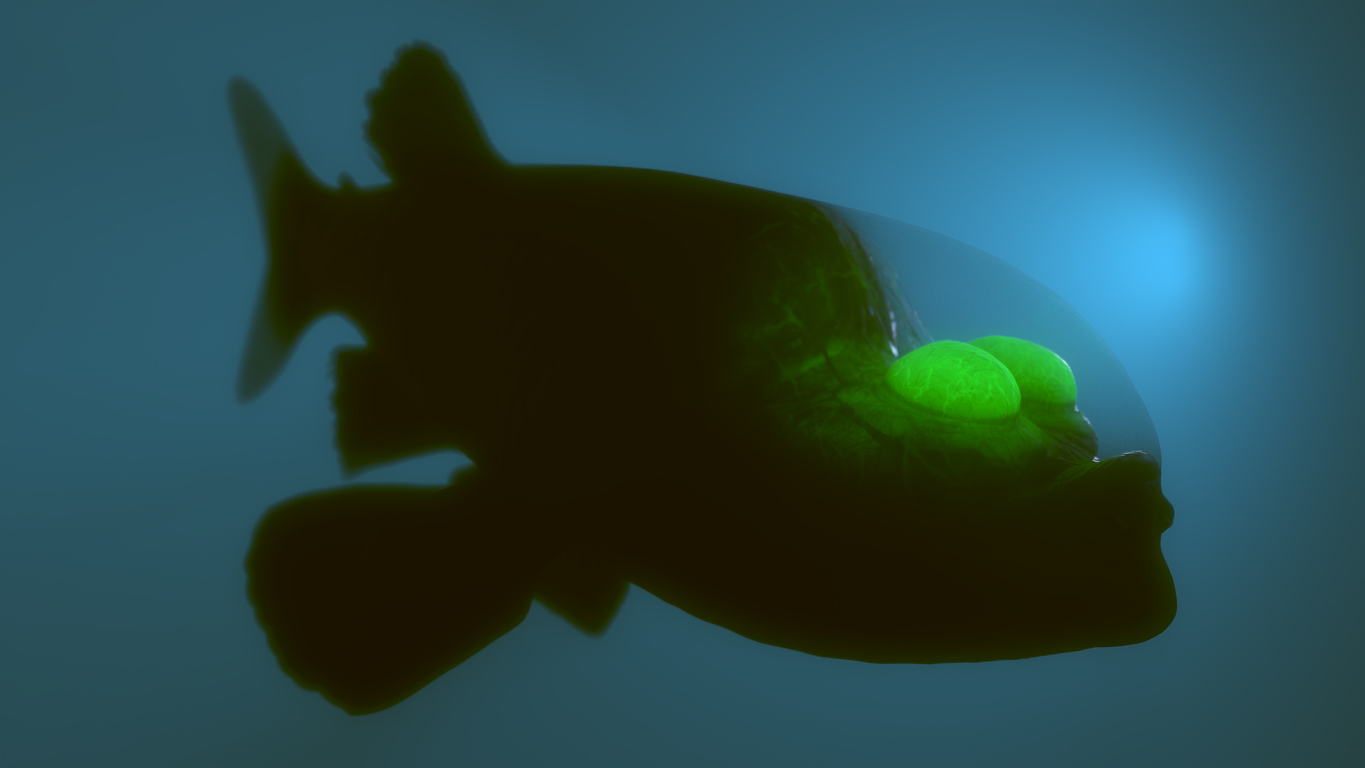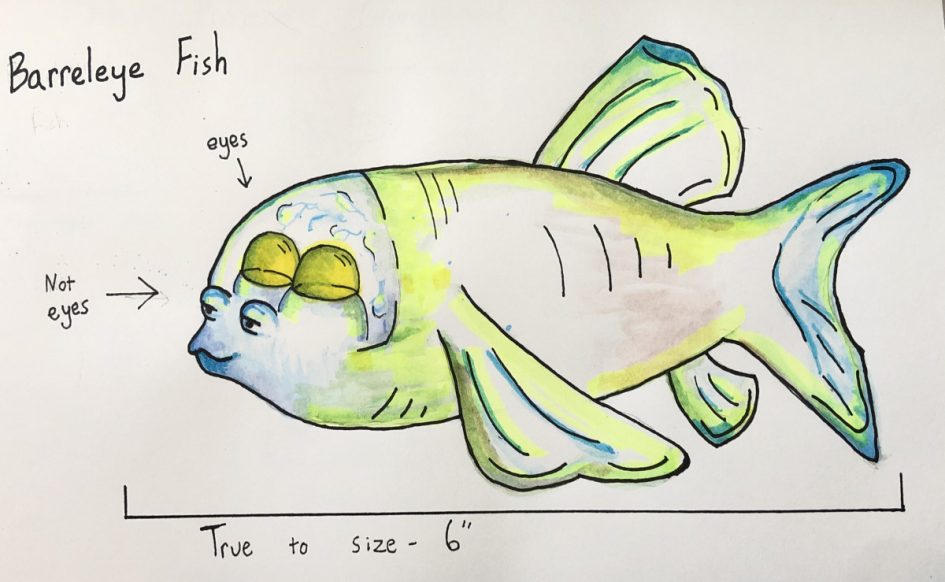
This trait serves as an evolutionary adaptation that allows it to see the silhouettes of potential prey. That holds true due to the fact that the orbs generally develop directed straight upward.

The various species also live in both temperate and tropical regions. Furthermore, all of these incredible creatures live deep in the depths of the Atlantic, Pacific, and Indian Oceans.

This led marine biologists to believe that the barreleye peers upwards to spot the faint shadows of its potential prey and then fixes its eyes forward as it slowly rises to meet its victim. This, however, would make it impossible for the fish to see what’s directly in front, and very difficult to capture prey with its small, pointed mouth.Īnd indeed: as it turns out, those eyes actually rotate. As noted above, until now scientists believed that the barreleye’s eyes were fixed in their heads in a stare straight above them. They use their ultra-sensitive tubular eyes to search for the faint silhouettes of prey overhead.Īlthough such tubular eyes are very good at collecting light, they have a very narrow field of view.

It also likely helps it spot the bioluminescent glow of its prey above.īarreleyes typically live near the depth where sunlight from the surface fades to complete blackness. They believe the green coloring helps the fish filter out sunlight from the surface far above it. For example, researchers noticed that the eyes of the barreleye weren’t just strange-looking, they were also green. The new paper by Bruce Robison and Kim Reisenbichler shows that these unusual eyes can rotate within a transparent shield that covers the fish’s head, allowing it to peer up at potential prey or focus forward to see what it is eating.ĭeep-sea fish have adapted to their pitch-black environment in a variety of amazing ways. This unique physical setup is actually one that illuminates the abyss in which the barreleye lurks, making it an astute hunting tool. The name of the barreleye comes from the pair of tubular eyes embedded in its transparent head which looks like a deep ocean submarine with a large glass window.

It is considered by biologists to be one of the “most peculiar and unknown fish groups in the deep-sea pelagic realm.” But the “spookfish” (as its more aptly known) is very much a real creature that lives deep in our oceans. Photo: MBARIĪt first glance, the barreleye fish (Macropinna microstoma) might look more like an alien creature than anything earthly. The two spots above the fish’s mouth are olfactory organs called nares, which are analogous to human nostrils. They point forward when the fish is feeding. The eyes point upward (as shown here) when the fish is looking for food overhead. The barreleye fish has tubular eyes that are extremely light-sensitive and can rotate within a transparent, fluid-filled shield on its head. And scientists have now solved the half-century-old mystery of how it uses them. The barreleye fish might look like a submarine, but its transparent head and tubular eyes are necessary to navigate the 2,500-feet-deep waters in which it dwells.


 0 kommentar(er)
0 kommentar(er)
